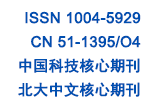



Process Optimization of the Residual Stress by Reverse-Epitaxial Growth 3C-SIC Film
Process Optimization of the Residual Stress by Reverse-Epitaxial Growth 3C-SIC Film
| {{custom_ref.label}} |
{{custom_citation.content}}
{{custom_citation.annotation}}
|
/
| 〈 |
|
〉 |